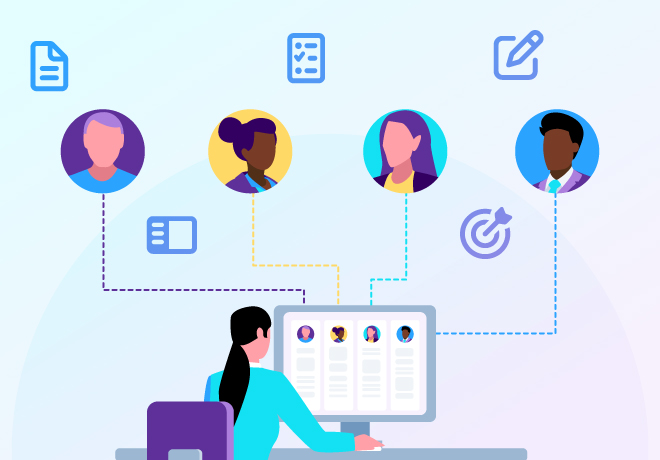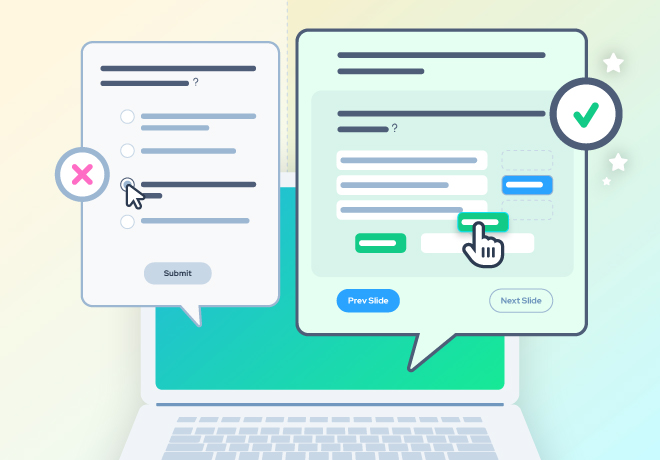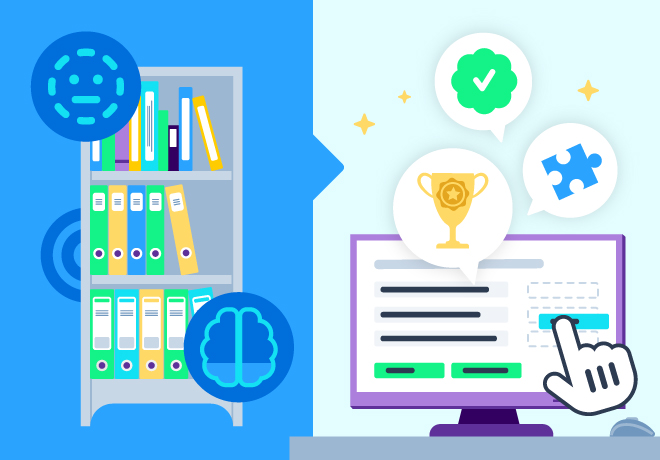
What is peer learning and what are its strengths?

Related articles
Get valuable eLearning insights to your inbox.
Listen to Neovation’s Demystifying eLearning podcast generated with NotebookLM!
Listen to our podcast on your favorite platform!
The adage “See one; do one; teach one” describes a generations-old peer learning model. It assumes that some types of skills are best learned and taught by watching, then mimicking a peer performing the same skill or task. To solidify the learning, the pupil becomes the teacher and passes this learning on to a peer.
While peer learning has its limitations — no single approach to training or teaching can possibly cover all learning scenarios — it is a valuable strategy in the employee training toolkit.
Strengths of peer learning

Peer learning or collaborative learning can be helpful when an employee needs to master a new skill. Watching how a peer completes a task while hearing that coworker explain their process is a form of highly relevant context-based training. When the newbie then tries to do the same task, the peer is present, watching and guiding their initial attempts.
When the training is more knowledge-focused, different collaborative approaches might be used, such as peers quizzing one another or encouraging teammates to engage with eLearning or microlearning tools that present content, review what was covered, and quiz learners.
In either case, the peer aspect is beneficial as encouragement and support from peers can increase the amount of time learners spend training. The ongoing cycle of learning, doing, and receiving feedback improves learners’ performance by helping them catch and fix errors early in their learning process.
Peer learning in the workplace
Organizations with strong learning cultures highlight peer learning at all levels. A new hire or trainee might shadow a more experienced colleague in the same role to “learn the ropes.” At higher echelons of the organization, executives might formally mentor promising managers and leadership candidates.
These collaborative or collegial learning relationships are different from formal manager — direct report relationships. While the trainee or mentee is likely less experienced than the mentor, and their job roles may be at different levels, the teacher is generally not the supervisor or boss of the learner.
What’s essential to form a peer-learning relationship is not commonality of job role or level, but rather that teacher or mentor and learners are committed to creating a supportive learning environment and are working toward shared goals. Peer learning deepens collegial relationships and shares institutional knowledge among employees.
Informal peer learning
Employees and individuals seek out peer learning relationships in an enormous variety of contexts, from their workplaces to professional development organizations to writers groups, study groups, and even support groups addressing any number of personal or professional topics.
While the topics learned and taught are wide-ranging, common threads emerge:
- Peer-learning pairs or groups appeal to highly motivated individuals, especially those interested in self-directed learning; learners have significant control over their learning approach, schedule, and, often, learning goals.
- Peer learning provides learners with access to experts — or at least, to those with greater knowledge of a topic — in a format that builds relationships while also helping them build their skills and deepen their knowledge.
- The learning and teaching environment is flexible and responsive to the learner’s needs and progress; it’s easy to adjust and focus on areas where a learner is struggling, for example, or a task that they need to learn immediately.
An essential element of your training strategy
Peer learning extends learning beyond formal instruction; it is not intended to replace microlearning and eLearning-based training platforms. It’s an essential element in your training strategy both for its potential to increase employees’ skills and knowledge and for its ability to cement peer relationships, strengthen institutional knowledge, and ensure that your organization’s learning culture flourishes.

An experienced writer, editor, tech writer, and blogger, Pam helps you make sense of learning science and eLearning technology. She provides information you can use to drive improvements in your training effectiveness and ROI.
Become part of our L&D community
We publish a new learning hub article — full of useful, practical topics — weekly.
Not sure where where you want to start? Jump into one of our recently published articles and see where it takes you!








-svg.svg)
-svg.svg)
-svg.svg)
-svg.svg)